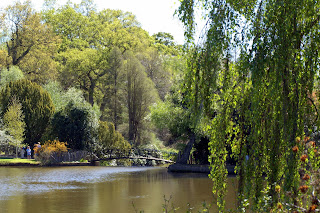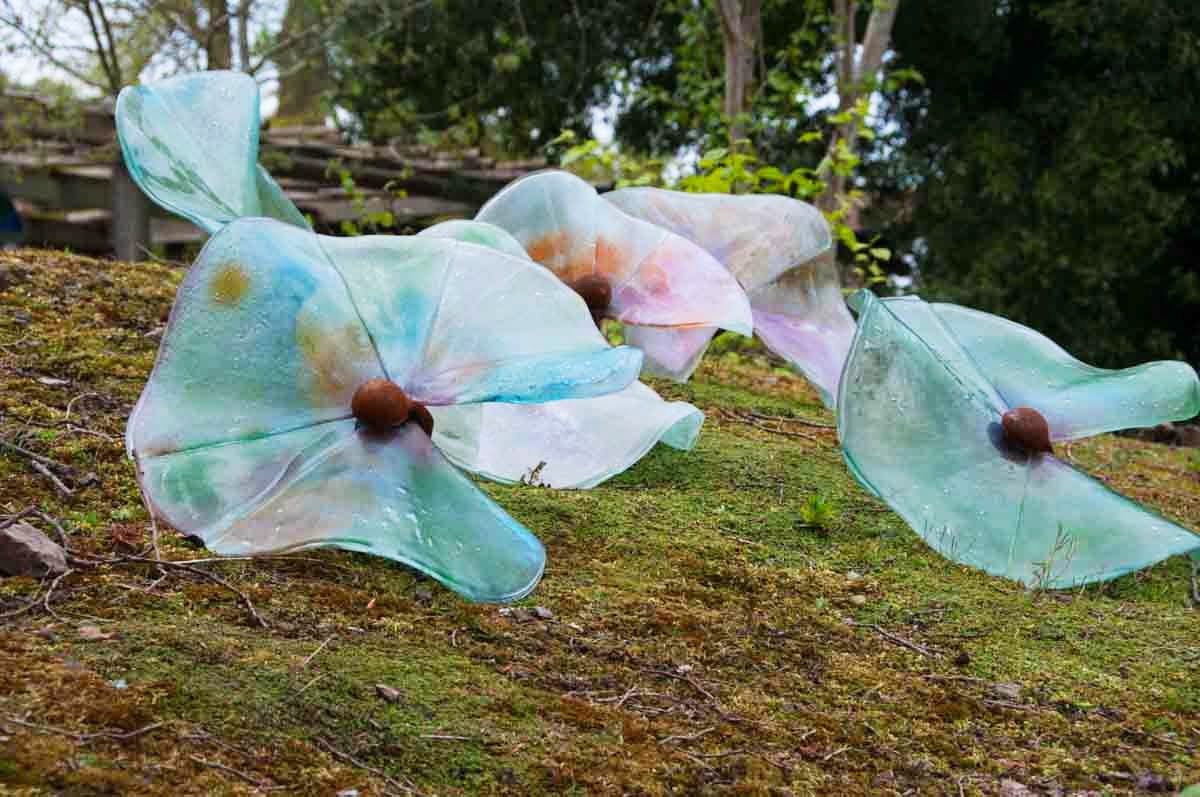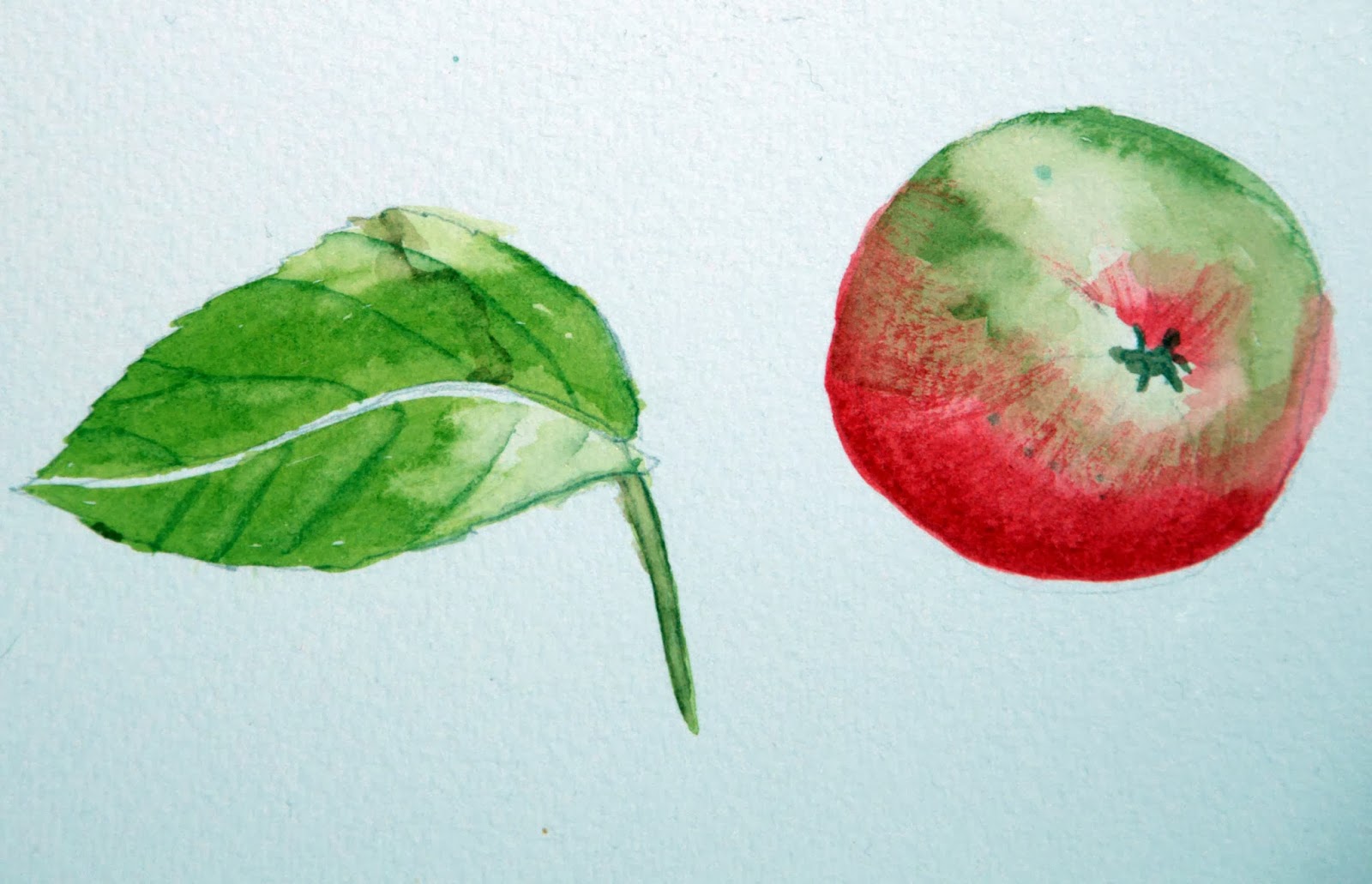It’s 1 pm, the sun is shining and the volunteer guides are starting to gather near the welcome lodge in anticipation of 60 Year 4 children arriving at the Botanic Garden for a tour. It’s my son’s school,
Horfield CEVC Primary School, and so I’ve decided to come along for the tour and get a glimpse into how the Garden is viewed through the eyes of eight and nine year olds.
Anne is one of the volunteer guides at the garden and she and I get chatting while we await the children’s arrival. She was a teacher for 40 years – teaching at GCSE and A levels. She laughs as she tells me she was a bit nervous she would find touring younger children challenging when she started giving these school tours at the Garden. She soon found, however, that though it was different from teaching upper level students, it was also just good fun.
 |
Volunteer guide Tony gives a talk to Year 4 students
from Horfield CEVC Primary School prior to their tour. |
“I’m not responsible for making sure they learn the curriculum, I’m here to entertain them with interesting stories about the plants we have here in the garden – to get them excited and inspired by what they see,” Anne says from a shady bench.
The guides have come prepared; they know the Horfield children have been learning about Egypt and different habitat types. As well as discussing the logistics of touring sixty children around the garden in small groups, they check in with each other about plants that might be important to point out that will link to the topics and themes they’ve been learning in the classroom.
Then the coach arrives.
A tour through the glasshouses
Before the children break into small groups to go around the garden, volunteer guide Tony gives a very brief talk about what plants need to survive. The children enthusiastically put up their hands in response to Tony’s question of what plants need to grow. Horfield Primary is lucky enough to have a garden and most of the children will have grown plants in the classroom at some stage (my son brought a runner bean home from school a few weeks back that’s doing splendidly). So, although photosynthesis hasn’t been taught by Year 4, there are other opportunities where the children are learning the basic needs and processes of plant growth.
 |
Students have a look in the pitcher plants in the sub-tropical
zone of the glasshouses. |
Baking sun and a tight schedule keeps the introductory talk brief and I follow Anne’s small group down into the glasshouses. She points out the Deadly Nightshade along the way and talks about the large black poisonous berries – a good wow factor for the kids right off the start!
In the sub-tropical zone, the children talk about the challenges of plants growing in a rainforest beneath a heavily shaded canopy and some of the adaptations they’ve made to get alternate sources of food. They have a look into the pitcher plants to see whether any wayward insects have fallen into the plant’s pitcher-shaped trap. As Anne walks by the lichen, she talks about how lightning changes the nitrogen in the air into a form that’s easier for plants to use – lichens need a continual supply of nitrogen to survive. Lightning helps feed plants? This has the children’s attention.
 |
Having a look at the giant lily pads in the pond in the
tropical zone of the glasshouses. |
In the tropical zone the giant lily pads (Victoria) impress the children immediately. Then Anne points out the papyrus that’s growing at the corner of the pond and the children quickly make the link between this plant and the papyrus paper that they’ve been learning about in their Egyptian studies. As I switch between the different groups I hear one of the other guides tell a story from Egyptian Mythology about how the Scorpion-godess, Selkis, protects the child Horus by hiding him in a papyrus thicket.
The
lotus plants (
Nelumbo nucifera) are also linked to Egypt as there is a
Nymphaea lotus that grows in the Nile. Anne encourages the children to splash some of the pond water onto the leaves of the lotus plant and I watch as two girls are astonished at how the leaves repel the water.
 |
| Water beads off the leaf of the lotus plant. |
Some of the other highlights in the tropical zone were the cocoa plant, vanilla and cotton. The Madagascar periwinkle (Catharanthus) is also pointed out for its utility in treating leukaemia.
As the children stand beside the cacti in the glasshouses, they are told that some of these plants will go 10 years without ever experiencing rainfall – longer than these children have been alive. Anne and the other guides talk about all the adaptations these plants have made to go for long periods without water.
 |
Students are given an opportunity to experience what
happens to Mimosa plants when you touch their leaves. |
Time travel through the evolutionary dell
I leave the heat of the glasshouses to join Tony’s group as they begin their walk through the evolutionary dell. Tony is telling the children about horsetails (no friend of the gardener) and pointing out the nodes of the plants. He tells them that 350 million years ago this little snippet of a plant would have been the size of a tree! The kids crane their necks up imagining and as we walk toward the tree ferns one of the girls says “It feels like time travelling!”
 |
Tony takes the children on a walk through time in
the evolutionary dell. |
Indeed it is like time travelling in the dell. In the 100 m span of the dell, we travel 200 million years from the horsetails (350 mya) to the first flowering plants (150 mya), such as the magnolia that’s on the left as you leave the dell. Surrounded by ferns, moss, horsetails, Wollemia and other conifers, the guides tell the children about how plants reproduced before the evolution of flowers and pollinators.
It’s never long enough
Somehow an hour seemed to fly by and before long the guides were rushing through the last few displays before sending the children off on their coach. As I had the opportunity to hop between the different groups I got the great sense that each group would have left the garden with a different experience as each guide has their own style and favourite stories associated with the garden. It’s never possible to see everything, but hopefully that means some of the children will encourage their parents and guardians to bring them back for another visit!
 |
| Tony holds up a horsetail and talks about plant nodes. |
Linking to the curriculum
Mrs Amy Parkin, one of the Year 4 teachers at Horfield Primary, was kind enough to speak with me the next day after the tour about how tours such as this link with the classroom curriculum. This is the first time Horfield Primary has done the tour at the Botanic Garden and it was prompted by Curator Nick Wray giving a talk earlier this year to the Key Stage 2 children.
“We had two weeks where we talked about prehistoric Bristol, dinosaurs and fossils,” said Mrs Parkin. “Each class did a science trail with various outside activities and we also had speakers come in to talk to the children. Nick spoke about what plants would have been around 160 million years ago and he brought in some different species to show the children.”
As well as learning about Egypt, the Year 4 children have also covered the topic of habitats under their science curriculum and there are also cross-curricular links with their geography topic of water.
“The tour at the Botanic Garden helped extend the children’s knowledge on habitats,” said Mrs Parkin. “We focused on animals in different habitats in the classroom and in the tour we saw how plants adapt to different habitats as well.”
This tour will also give the Year 4 students a taste of what lies ahead as they will have plants as a topic in Year 5.
Talking with the students after the tour
After the tour I had a chance to speak with Megan and Henry about what they thought of the Botanic Garden. Megan said “I really liked the giant lily pads, especially since a small child could sit on one!”, while Henry really liked the giant lemon that was in the glasshouse.
When I asked Megan and Henry what the most interesting thing they learned was, Megan said she couldn’t believe that some plants can live for 10 years without water. Henry, on the other hand, learned something new about pollination, “There are lots of different bugs that pollinate plants – blowflies and beetles – and birds too!”
The Botanic Garden will run about 15 school tours during the months of June and July, with the help of their dedicated volunteer guides. These tours are in keeping with the Garden’s mission to promote education and awareness as well as to encourage and foster interest in plants within the Bristol community. In fact, the garden would like to run more school tours, so if you are involved with a local school and are interested in a trip to the Botanic Garden, please contact them via: www.bristol.ac.uk/botanic-garden
























